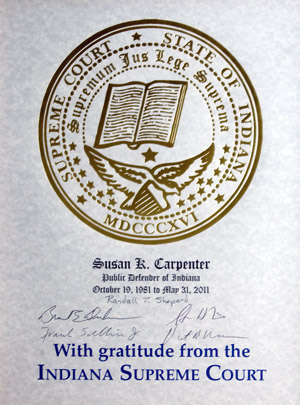Editor’s Note: This report is a condensed version of the full report prepared by Diane Mains and Mike McMahon of the Indiana Judicial Center. The Indiana Judicial Center has prepared a legislative report that contains summaries of select bills of interest passed in the 2011 session and can be can be found at: http://www.in.gov/legislative/reports/2011/DIGEST_OF_ENACTMENTS.PDF The entire text of any law, as well as a … [Read more...] about 2011 Legislative Review
Articles
Things to Know about Case Types and Court Information
1 Look for the new Case Type Quick Reference Guide. There is now a quick and easy tool that court and clerk staff can use to find out what case type they should assign to unusual proceedings. Detailed instructions about how cases should be designated and counted are part of the statistical reporting system and are available at courts.in.gov/admin under Forms > Statistics Reporting Forms. In addition to the … [Read more...] about Things to Know about Case Types and Court Information
Susan Carpenter Retires as State Public Defender
After serving as the Public Defender of Indiana for nearly 30 years, Susan K. Carpenter retired in May. The Indiana Supreme Court appointed Ms. Carpenter to the position in 1981. When announcing Carpenter's retirement, Chief Justice Randall T. Shepard praised her three-decade career and said, “As chief advocate for the rights of indigent defendants, Susan Carpenter has made Indiana a place of greater justice. She has … [Read more...] about Susan Carpenter Retires as State Public Defender
State Public Defender Uses Videoconferencing to Reduce Costs and Improve Services
Videoconferencing equipment was installed at the Wabash Valley Correctional Facility in Carlisle in partnership with the Indiana Department of Correction (IDOC) and the Indiana Office of Technology (IOT). The equipment resembles a pay phone and is designed specifically for correctional use. It features a video screen and camera (similar to a web cam) that transmits audio and video in real time. All the controls … [Read more...] about State Public Defender Uses Videoconferencing to Reduce Costs and Improve Services
Where there's smoke, there's… water?
Thanks to the quick and knowledgeable responses by Tippecanoe Clerk Christa Coffey and her staff, no records of permanent value were lost as a result of a fire in the courthouse annex. The fire—deemed “suspicious” by the Lafayette Fire Department—occurred in the overnight hours of May 3rd and May 4th. Clerk's office staff were concerned about the impact of the fire and smoke on the records, but the major damage was … [Read more...] about Where there's smoke, there's… water?
